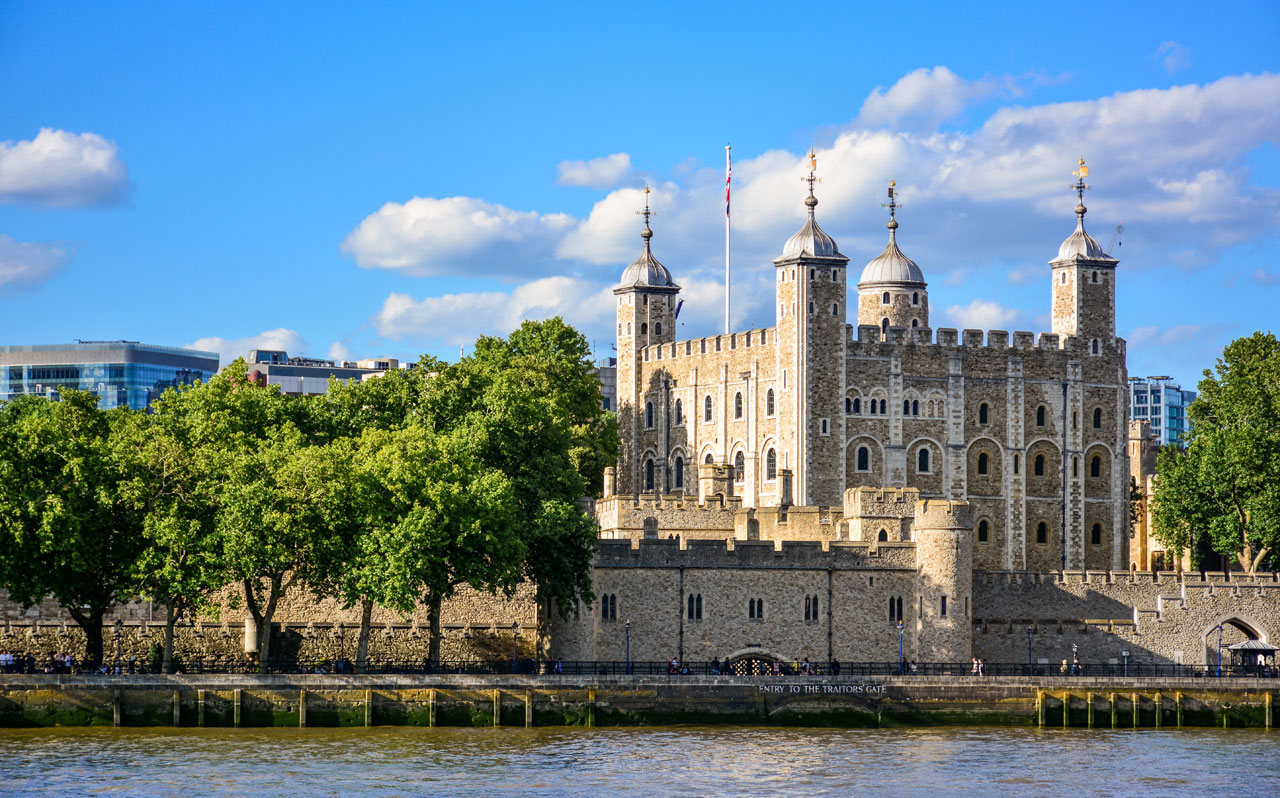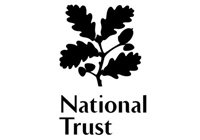- Home
- English Castles
- Tower of London
Visit the Tower of London

A brief history
The Tower of London is a complex of buildings which started during the time of William the Conqueror. In the 1070s William began to build a massive stone fortress in London to defend and proclaim his royal power.
The Tower of London has been used as a palace, a treasury, a mint, a library, a bank and an arsenal, but it is most famous for having been used as a notorious prison.
Around 1240 King Henry III made the Tower of London his home. He widened the grounds to include a church, added a great hall and other buildings and whitewashed the Great Tower which then became the famous White Tower. Huge defensive walls were added with a series of small towers.
The Tower also controlled the supply of the nations money. All coins of the Realm were made at the Tower Mint from the reign of Edward I until 1870. The Crown Jewels are still protected by a garrison of soldiers today.
The famous Yeoman Warders, nicknamed "Beefeaters", have been guarding the Tower since Tudor times. They were originally part of the monarch's personal bodyguard. Henry VIII decided that the Tower should be protected by part of the royal bodyguard.
The Chapel Royal of St Peter ad Vincula is best known for the burial place of some famous Tower prisoners including three Queens of England, Anne Boleyn, Catherine Howard and Lady Jane Grey. They were all executed within the Tower in the 16th century.
Anybody visiting the Tower today is fascinated by the stories of England's turbulent and sometimes gruesome history. The Tower is said to be haunted with Anne Boleyn being the most famous and persistent of all Tower ghosts.
One of the most famous legends of the Tower surrounds the Tower Ravens. It is said that the kingdom and Tower of London will fall if the six resident ravens ever leave the fortress. There are seven Ravens living at the Tower today - the required six plus one spare!
Things to do at the Tower of London
THE WHITE TOWER AND THE LINE OF KINGS
You will find the White Tower in the centre of the Inner Ward and it was actually built from white stones. It is the most famous castle keep in the world. Building work began in 1078, the White Tower was completed around 1100 and it was built to deter foreign invaders and to impress and subdue Londoners.
The Line of Kings is a remarkable display of royal armor. Established in 1652 this collection of weaponry includes hunting and sporting weapons from medieval times to the end of the 19th century.
THE CROWN JEWELS
The Crown Jewels have been displayed and guarded at The Tower since 1661 and are the most powerful symbols of the British Monarchy.They are still regularly used by the Queen for important national and royal ceremonies such as the State Opening of Parliament. Look out for the 'in use' sign when you visit.
The Crown Jewels are not just a collection of crowns but you will also find scepters, swords, rings, bracelets and gold and silver plates! The ceremonial and symbolic objects used during the coronations of British Kings and Queens is known as the Regalia.
THE ROYAL MINT
The Tower of London served as the site of The Royal Mint from 1279 until 1810, making the majority of the country's coins for over 500 year. Edward I installed The Mint within the safety of the Towers Walls and most of the coins where made in a dedicated area that became known as the Mint Street.
Until mechanisation in the 1600s all coins were made by hand and it was dangerous work. The Mint was hot and noisy with huge furnaces to melt down the precious metal and few Mint workers escaped uninjured without the loss of a finger or even an eye.
THE MEDIEVAL PALACE
The Medieval Palace at The Tower is made up of three towers, St.Thomas's Tower, the Wakefield Tower and the Lanthorn Tower.
The Wakefield Tower was built by Henry III and was probably used for private audiences. St Thomas's Tower was built by Edward I in the late 1270s. In front of the huge fireplace Edward I would have conducted important business with his visitors.
The Lanthorn Tower contains rare objects dating back to the time of Henry and Edward.
THE BLOODY TOWER
The Bloody Tower served as an infamous prison and will always be associated with The Two Princes, 12 year old Edward V and his younger brother, Richard. On orders of their uncle future Richard III they stayed in the rooms of this tower and were supposedly murdered in 1483.
Sir Walter Raleigh, an accomplished scholar of poetry, science and history and celebrated explorer, was held prisoner in The Bloody Tower no less then three times under the reign of James I. His reckless nature finally made him unpopular at the court, he was charged with treason and executed in 1618.
THE CHAPEL ROYAL OF ST. PETER AD VINCULA
The Chapel is the burial place of some of the most famous Tower prisoners including three queens of England - Anne Boleyn, Catherine Howard and Jane Grey, all executed within the Tower in the 16th century.
The present form of the chapel dates from around 1520 and is a rare example of early Tudor church building.
TOWER GREEN
There is a plaque showing the site of the scaffold used for the private executions on the Tower Green. Several famous prisoners were executed her including Anne Boleyn and Catherine Howard, former wives of Henry VIII
Location
Tower of London
London EC3N 4AB
Official website: Tower of London
The Tower can be found within easy walking distance of several Mainline Stations
- London Bridge Station - 10-15 mins walk
- Liverpool Street Station - 20 mins walk
- London Charring Cross Station - 25 mins walk
Tower Hill Station - District and Circle Lines - 5 minute walk
Buses
Routes 15, 42, 78, 100 and RV1 stop near the Tower of London

